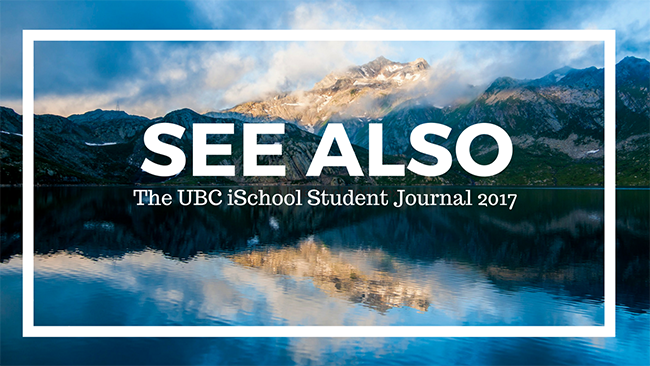When Reconciliation Meets Conflict: Exploring Indigenous Archives
DOI:
https://doi.org/10.14288/sa.v0i3.188940Keywords:
archivists, first nations, aboriginalAbstract
This article proposes a framework of Indigenous archives that encompasses repositories housed in Indigenous communities and non-Indigenous repositories that care for records by and about Indigenous peoples. The author contends that a discourse of Indigenous archives can help archivists reform their theories and methodologies in ways that support Indigenous sovereignty and ways of knowing. The author makes the case for a discourse of Indigenous archives by using two case studies and reviewing key policy documents such as the United Nations Declaration on the Rights of Indigenous Peoples.References
Kim Christen, “Opening Archives: Respectful Repatriation.” The American Archivist 74 (2011), 207-208.
It is common practice to capitalize the term Indigenous as a sign of respect for Indigenous communities.
I do not intend to imply that archival professionals and Indigenous people are mutually exclusive categories. There are many examples of accomplished Indigenous archival professionals.
Terminology, Indigenous Foundations, accessed November 13, 2016, http://indigenousfoundations.arts.ubc.ca/?id=7400
United Nations, United Nations Declaration on the Rights of Indigenous Peoples, accessed November 13, 2016 http://www.un.org/esa/socdev/unpfii/documents/DRIPS_en.pd
First Archivists Circle, Protocols for Native American Archival Materials, accessed November 13, 2016, http://www2.nau.edu/libnap-p/protocols.html
Indigenous and Northern Affairs Canada, “Statement of Apology to former students of Indian Residential Schools,” accessed November 16, 2017, https://www.aadnc-aandc.gc.ca/eng/1100100015644/1100100015649
Truth and Reconciliation Commission of Canada, Truth and Reconciliation Commission of Canada: Calls to Action, accessed November 13, 2016, http://www.trc.ca/websites/trcinstitution/index.php?p=893
J.J. Ghaddar, “The Spectre in the Archive: Truth, Reconciliation, and Indigenous Archival Memory,” Archivaria 82 (forthcoming).
Ghaddar, “The Spectre in the Archive.”
Sue McKemmish, Shannon Faulkhead, and Lynette Russell, “Distrust in the archive: reconciling records,” Archival Science 11 (2011): 211-239.
McKemmish et al., “Distrust in the archive,” 220.
McKemmish et al., “Distrust in the archive,” 230.
McKemmish et al., “Distrust in the archive,” 231.
McKemmish et al., “Distrust in the archive,” 232.
McKemmish et al., “Distrust in the archive,” 233.
The National Centre for Truth and Reconciliation, [Homepage], accessed November 17, 2016, http://nctr.ca/map.php
Lougheed, Brett, Moran, Ry, and Callison, Camille. “Reconciliation through Description: Using Metadata to Realize the Vision of the National Centre for Truth and Reconciliation.” Cataloging and Classification Quarterly 53 (2015): 597.
Lougheed et al., “Reconciliation through Description, 605.
Lougheed et al., “Reconciliation through Description, 597.
Lougheed et al., “Reconciliation through Description, 601.
Lougheed et al., “Reconciliation through Description, 608.
Lisa Nathan, Elizabeth Shaffer, and Maggie Castor, “Stewarding Collections of Trauma: Plurality, Responsibility, and Questions of Action,” Archivaria 80 (2015), 115.
Nathan et al., “Stewarding Collections of Trauma,” 112.
Nathan et al., “Stewarding Collections of Trauma,” 113-115.
As it stands the IAP case is ongoing, with the Supreme Court of Canada recently agreeing to review previous decisions by the Ontario Supreme Court and Ontario Court of Appeal. For more information see Karen Busby, “SCC to rule on preservation of residential school survivors’ files,” Canadian Lawyer, accessed November 17, 2016, http://canadianlawyermag.com/6219/SCC-to-rule-on-preservation-of-residential-schools-survivors-files.html
Ghaddar, “The Spectre in the Archive.”
Ghaddar, “The Spectre in the Archive.”
Ghaddar, “The Spectre in the Archive.”
Published
Issue
Section
License
All authors in See Also retrain full copyright of their material.
All content in See Also is published under an Attribution-NonCommercial-NoDerivatives 4.0 license.
Under this license you are free to:
Share — copy and redistribute the material in any medium or format
Under the following terms:
Attribution — You must give appropriate credit, provide a link to the license, and indicate if changes were made. You may do so in any reasonable manner, but not in any way that suggests the licensor endorses you or your use.
NonCommercial — You may not use the material for commercial purposes.
NoDerivatives — If you remix, transform, or build upon the material, you may not distribute the modified material.
- No additional restrictions — You may not apply legal terms or technological measures that legally restrict others from doing anything the license permits.

